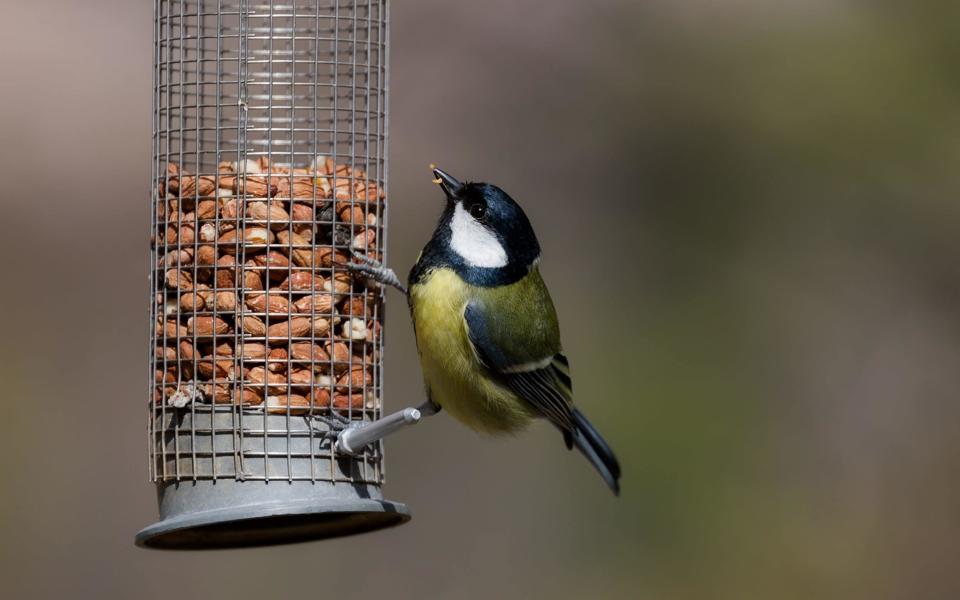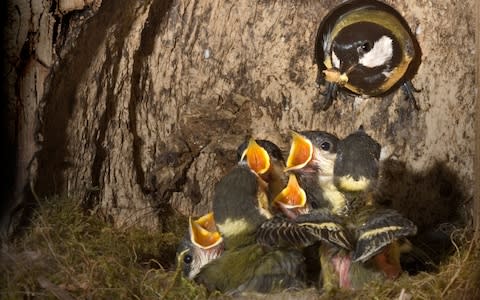Ken Thompson: what bird feeders can teach us about evolutionary theory

As I think I’ve mentioned before, bird feeding in British gardens takes place on a massive scale; the UK spends twice as much on bird seed as the rest of Europe put together. It would be surprising if this weren’t having some large effects, not least on the birds themselves. A recent study by a consortium of British and Dutch researchers, and published in the journal Science, sheds some interesting light on the subject.
One of the most common species at bird feeders is the great tit, and measurements of hundreds of specimens from museums in Britain and mainland Europe show that British great tits have longer beaks. The difference isn’t enormous, but then neither are the beaks. Of course, that in itself doesn’t tell us very much.

There are no known differences in ecology and behaviour between British and European great tits, but maybe our tits have always had longer beaks for some unknown reason, or just by chance. So the authors looked at data from one of the best-studied bird populations in the world – the great tits of Wytham Woods near Oxford. Twenty-three years of data from Wytham’s birds show a steady increase in beak length. Again the change isn’t large, only about 0.1 mm, but that’s a lot over such a short time, in an organ that only measured 13.5 mm to start with.
But why are beaks getting longer in British great tits? The researchers found a gene, catchily named COL4A5, that was strongly linked to the change in beak length. They were then able to show that British birds with this gene successfully raised more fledglings, but that Dutch birds with the same gene did not. In fact, having the long-beak gene even seemed to be a slight disadvantage for Dutch birds. Notably, the greater success of the British birds wasn’t because they laid more eggs, they were just more successful at turning eggs into fledgling birds. Which in turn suggests that longer-beaked birds may be managing to obtain more food.

Back to Wytham, where data from radio-tagged birds showed that the genetically-distinct, longer-beaked birds were more likely to use bird feeders. In other words, it looks like birds with the long-beak gene may somehow be able to get more out of bird feeders. But the researchers don’t speculate about exactly how this might happen, so although the link between beak length and bird feeders looks plausible enough, more work is needed to figure out exactly what is going on. If our favourite theory turns out to be wrong, it wouldn’t be the first time.
Personally, given the recent news about admissions to Oxbridge, I wonder if having longer beaks doesn’t just make it easier for Oxford’s great tits to look down their noses at other birds.
A footnote to this research is that the researchers identified a number of other genes connected to beak length, two of which are also linked to variation in beak shape in Darwin’s finches, nicely connecting this example of natural selection right back to the origin of the concept.
I also can’t help noting that the Science paper reporting all this is entitled “Recent natural selection causes adaptive evolution of an avian polygenic trait”, a title that might have been designed to conceal this fascinating stuff from all but the most inquisitive reader.
Ken Thompson is a plant biologist with a keen interest in the science of gardening. His latest book, The Sceptical Gardener, is a collection of his columns for The Telegraph. Visit books.telegraph.co.uk

